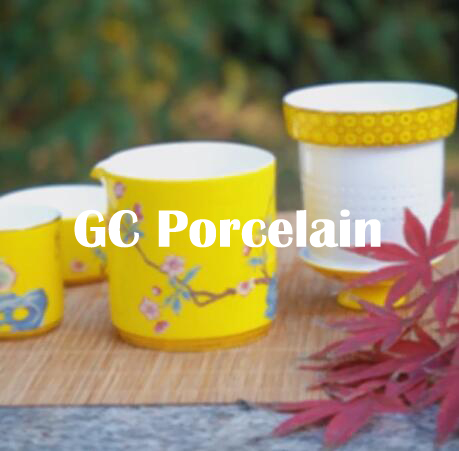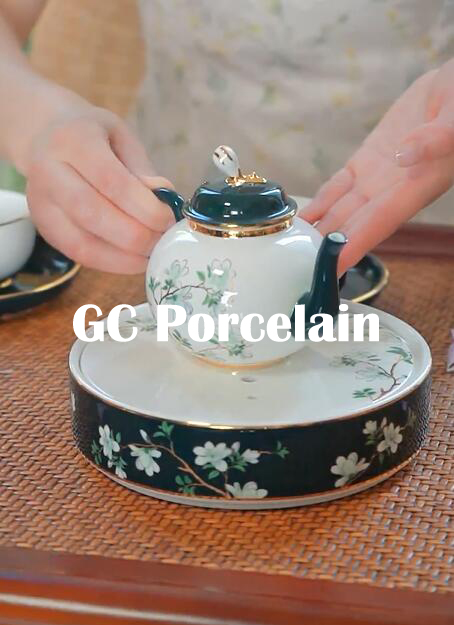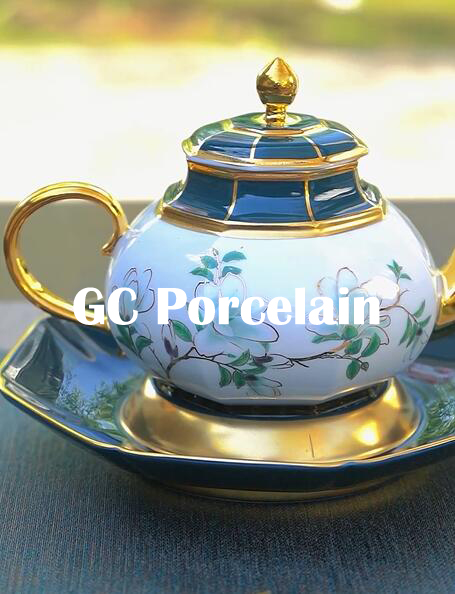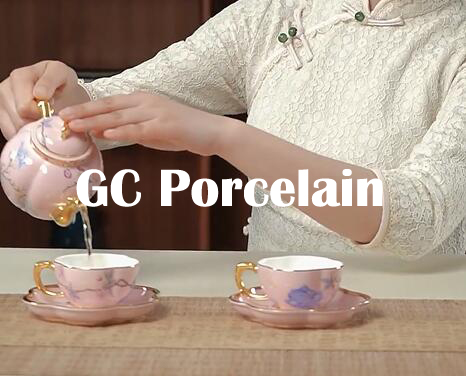Introduction
Embarking on a deep dive into the universe of Bone China and Porcelain today - a pair of ceramic types that we bump into frequently in our everyday existence. Ever found yourself mulling over the subtle contrasts between these two when selecting your tableware? Or pondering which one may be the more suitable match for your personal needs? If these questions have crossed your mind, rest assured, you've landed in just the right spot. In this piece, we'll dissect the distinctive properties of these materials, guiding you towards an informed decision.

What is the difference between bone china and porcelain?
Distinguished as a form of soft-paste porcelain, Bone China is an intricate mix of bone ash, a feldspathic substance, and kaolin. What sets it apart is its remarkable whiteness and translucency levels, coupled with a mechanical strength and resistance to chipping that's significantly higher than its counterparts.
Porcelain, the unique material takes shape through a meticulous process involving the heating of several ingredients - kaolin being one of them - within the confines of a kiln. The temperature within this kiln dances between 1,200 and 1,400 °C. Porcelain's claim to fame resides in its remarkable hardness, strength, and translucent quality, carving out a singular niche in the ceramic universe.
The making process of bone china and porcelain
The creation of Bone China is a fascinating process, which begins with the concoction of bone ash, feldspar, and kaolin. This blend is then skillfully molded into the shape desired. But that's not all - it is then subjected to extreme heat, approximately 1200°C to be precise. After this initial heating, it is glazed to perfection before being fired again, albeit at a lesser temperature, culminating in a robust, translucent masterpiece.
On the other hand, the manufacturing of Porcelain is an equally intriguing process. It commences with the blending of kaolin, feldspar, and quartz. This mixture is then transformed into the shape envisioned. Subsequently, it is subjected to an intense heat treatment, with temperatures ranging between 1300-1400°C. This high-temperature firing vitrifies the material, resulting in a hard, white, and translucent piece that is truly a sight to behold.
Comparison of characteristics between bone china and porcelain
- Bone China typically contains around 30-50% bone ash, which gives it its unique properties. (source: The Potteries Museum & Art Gallery, Stoke-on-Trent, UK, http://www.stokemuseums.org.uk/pmag/collections/ceramics/fine/)
- Porcelain is fired at temperatures ranging from 1,200 to 1,400°C, which gives it its hardness and translucency. (source: The Potteries Museum & Art Gallery, Stoke-on-Trent, UK, http://www.stokemuseums.org.uk/pmag/collections/ceramics/fine/)
- Bone China is generally more expensive than porcelain due to its manufacturing process and the materials used. (source: The Spruce Eats, https://www.thespruceeats.com/what-is-bone-china-1328730)
- Despite its delicate appearance, bone china is the strongest of the porcelain or china ceramics, and is more durable than porcelain. (source: The Spruce Eats, https://www.thespruceeats.com/what-is-bone-china-1328730)
- Porcelain is less likely to chip than bone china because of its hardness, but it's also less translucent and often heavier. (source: The Spruce Eats, https://www.thespruceeats.com/what-is-bone-china-1328730)
| Bone China | Porcelain | |
|---|---|---|
| Materials & Process | Made from bone ash, feldspar, and kaolin. Fired at lower temperatures. | Made from kaolin, feldspar, and quartz. Fired at higher temperatures. |
| Appearance & Feel | Warm white color, thin, lightweight, and translucent. Feels delicate and special. | White, often thicker and heavier. Less translucent. Feels sturdy. |
| Durability & Use | Highly durable and chip-resistant. Ideal for special occasions. | Hard, dense, and durable. Ideal for everyday use. |
| Price | Generally more expensive due to materials and complex process. | More affordable, offering a wide range of price points. |
The pros and cons of Bone China and Porcelain
Bone China: Pros - Bone China has a beautiful, elegant look with its warm white color and translucency. It's surprisingly tough, resisting chips better than most ceramics. It's lightweight and thin, making it feel delicate and special. Cons - The main downside is the price. Bone China can be quite expensive. Also, because it's so light and thin, some people might find it too delicate for everyday use.
Porcelain: Pros - Porcelain is hard, dense, and durable. It's great for everyday use because it can take a bit of a beating. It's also generally more affordable than bone china, so it's easier on the wallet. Cons - It's often heavier and thicker than bone china, which might not feel as elegant. It's also less translucent and can chip more easily than bone china.

A guide on when to use Bone China and Porcelain based on different situations
- Daily Use:
- Porcelain is often the better choice for daily use. It's durable, heavy, and can withstand the rigors of everyday life. It's also generally more affordable, so you won't be too upset if a piece accidentally breaks.
- Special Occasions:
- Bone China is perfect for special occasions. Its delicate appearance, beautiful translucency, and warm white color make it feel special. It's also lightweight and thin, which adds to its elegance.
- Collecting:
- If you're a collector, Bone China might be the way to go. It's often more expensive, but it's also more unique and valuable. The intricate manufacturing process and the use of bone ash make each piece special. However, Porcelain can also be a good choice for collectors, especially if you're interested in pieces from specific regions or periods, as Porcelain has a long and rich history.
In conclusion, Bone China and Porcelain, while both beautiful, have distinct differences. Bone China, with its delicate appearance and surprising durability, is often pricier, while Porcelain, robust and practical, is typically more affordable. Each has its unique charm and utility. Remember, the choice between Bone China and Porcelain ultimately depends on your personal needs and preferences. Whether it's for daily use, special occasions, or collecting, choose the one that resonates with you the most.
If you have any questions or need to custom dinnerware service, please contact our Email:info@gcporcelain.com for the most thoughtful support!






